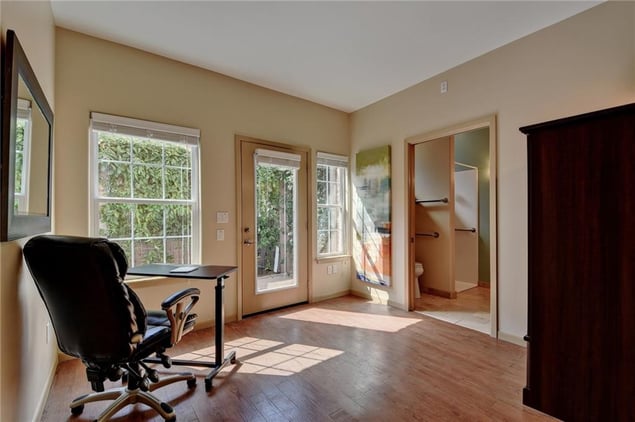Along with the exponential birth rate of the baby boomers in the late 40’s and 50’s, the need for more housing created sprawling American suburbs to accommodate the growing families. Developments sprang up with few architectural options while affordability was the main concern. Today, these same homes slowly and increasingly signify outdated and obsolete architectural barriers exposing a true lack of accessibility for the very people inhabiting them. The situation is ever more expanding in time because the greatest majority of individuals want to age where they currently reside. This basic desire is creating unprecedented nationwide challenges and a niche market in the remodeling industry known as Aging in Place. The majority of Americans over the age of 45 want to continue living in an environment they are well acquainted with throughout the maturing years. Everyone is living longer only to experience many life challenging events during an extended lifespan.
According to the AARP, 80 percent of older home owners overwhelmingly prefer to Age in Place, which means living in a home safely, independently and comfortably, regardless of age or ability level. People with disabilities are aging but healthy individuals are aging into a disability. Aging in Place strictly deals with the remodeling of existing homes. Therefore, to Age in Place, owners need to modify their home as they mature increasing access and safety using Universal Design before a life changing event forces making sudden architectural changes. The Aging in Place market in the U.S. today is influenced by the increasing size of the aging population, the market desire to remain in one's home, a constantly increasing cultural diversity, and the aging housing stock associated with reduced affordability. The desire to remain in existing homes is driven by social attachments via a network of neighbors, friends, and family. Comfortable positive aging is a way of living rather than a state of being. The three main areas needing improvement for a person wanting to Age in Place is the bathroom, the kitchen, and the family area in that order.
Clearly the act of Aging in Place occurs during a period of time when seniors have the ability to make decisions to better support quality of life. There are three segments served within the Aging in Place marketplace. The first segment includes those homeowners without urgent needs. The second segment focuses on a group of homeowners with progressive health condition needs. The third sector involves those people who have undergone traumatic health changes or accidental injuries necessitating immediate modifications to the home. The choice to Age in Place does not mean the homeowner has to do everything in the future by themselves. Aging in Place principles support responsible people living life with dignity and independence even when outside assistance is essential.










